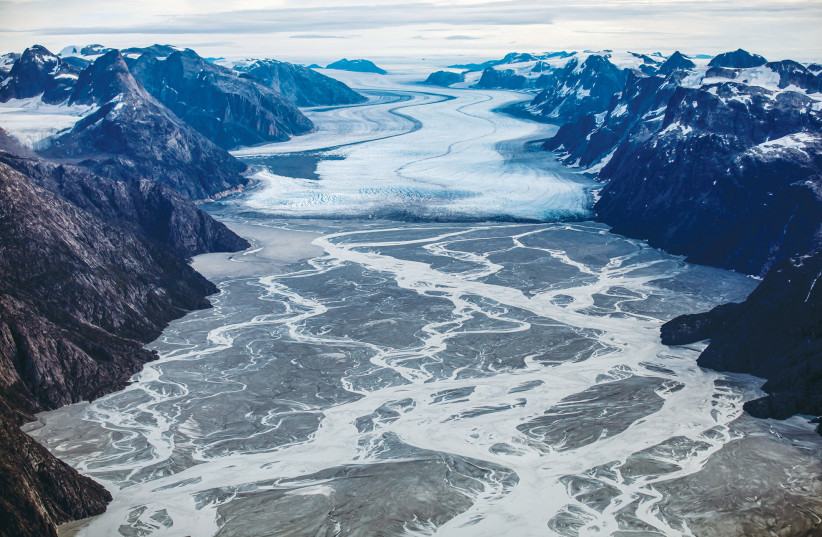Recent findings show Greenland’s ice-covered center once supported a lush tundra ecosystem. What does this historical shift mean for current climate change and rising sea levels?
AUGUST 10, 2024 06:35

A groundbreaking study has unveiled startling evidence about Greenland’s ice sheet, revealing that the island’s center once experienced significant melting and hosted a tundra ecosystem.
The study, published in the Proceedings of the National Academy of Sciences on Monday, suggests that the island was ice-free for extended periods within the last million years. The presence of soil and an established ecosystem in what is now a glaciated region highlights the potential impact of current climate change on the ice sheet.
Researchers reexamined sediment from a two-mile-deep ice core extracted in 1993 and stored in Colorado for three decades. They discovered well-preserved remnants of willow wood, insect parts, fungi, and even a poppy seed, indicating that the ice sheet melted in the recent geological past, allowing a tundra landscape to thrive.Top ArticlesRead More
Israelis desperately needed something to celebrate, and our Olympians gave us just that
This new evidence confirms a prior hypothesis that Greenland’s ice sheet was more fragile than previously believed.
23 feet under
If Greenland’s ice can melt entirely, as past evidence suggests, the resulting sea-level rise could be catastrophic. Researchers estimate that if current warming trends continue, the complete melting of Greenland’s ice sheet could contribute to a sea-level rise of approximately 23 feet over the next few centuries. This poses a significant threat to coastal cities worldwide, including Boston, New York, and Mumbai.
The study builds on previous research that questioned the long-held belief that Greenland’s ice sheet has been stable for millions of years. Earlier findings, such as those from 2016 and 2019, had already suggested that Greenland’s ice was not as permanent as once thought. The new evidence strengthens this view, demonstrating that past warming events were sufficient to melt the ice and support a tundra ecosystem.

The research serves as a stark warning about the potential consequences of human-caused climate change. The melting of Greenland’s ice sheet could have far-reaching impacts on global sea levels and coastal infrastructure. As scientists continue to study these past climatic shifts, the need for urgent action to mitigate current climate change becomes increasingly clear.




